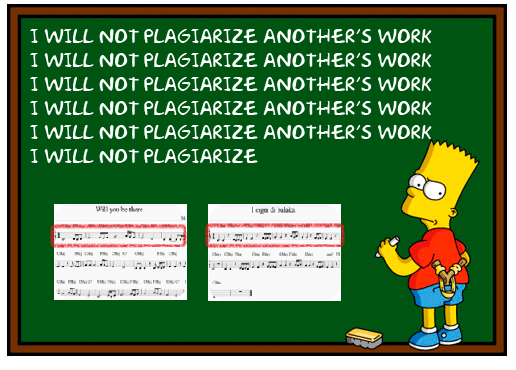Music plagiarism
 Plagiarism, which is the act of copying the work of others
and trying to pass it off as one own is seen as a moral
offense and often also a legal offense Plagiarism has an
ancient root, as the word itself is derived from the Latin words
plagiaries, which means abductor, and plagiare, which means
to steal. Plagiarism has become a major concern since the
establishment of education assessment. Since we entered the
Internet era, the fast, vast, and easy access of information has
further escalated the problem of plagiarism. It exists in many
different scenarios, and is often difficult to prove or solve.
Plagiarism, which is the act of copying the work of others
and trying to pass it off as one own is seen as a moral
offense and often also a legal offense Plagiarism has an
ancient root, as the word itself is derived from the Latin words
plagiaries, which means abductor, and plagiare, which means
to steal. Plagiarism has become a major concern since the
establishment of education assessment. Since we entered the
Internet era, the fast, vast, and easy access of information has
further escalated the problem of plagiarism. It exists in many
different scenarios, and is often difficult to prove or solve.
Examples of plagiarism include the textual plagiarism (verbatim copying, paraphrasing, and so on) applied for example to literature or to computer programs, and the artistic plagiarism, where examples are plagiarism in movie and television works or the misappropriation of the authorship of (parts of) musical compositions. Plagiarism occurs when two works are “substantially similar”, whereas the owner of one of the two works has copied or has been inspired by the work of another. Interpreting or measuring the concept of substantially similarity is actually an open issue.
According to the legislation, there are no general and accepted rules according to which a minimum number of notes, or beats, simultaneously present in two music compositions constitutes plagiarism. Thus, over the years has emerged the need of defining the general criteria to identify cases of plagiarism. Plagiarism could be more fuzzy than clear, more complex than trivial copy and paste. In fact, conversely to what happen for textual plagiarism where a similarity can be easily identified between two or more elements, in the music field it is needed to consider all the features of a composition, that is, pitch, duration, intensity and timbre, as well as, melodic and harmonic dimensions. Even not emphasized in the law, melody usually is the deciding element in cases of plagiarism. In fact, often we talk about melodic plagiarism to indicate music plagiarism. It is a phenomenon very debated in the music context, particularly in the context of western pop music. The recognition of a music plagiarism is not a trivial task, because it depends by the ability of recognizing similarities between melodic fragments inside two melodies. We have proposed both text-based and fuzzy-based plagiarism detection tools.
Quest'ulteriore tassello permette al pubblico di poter usufruire dei servizi descritti nel paper "An adaptive meta-heuristic for music plag> Difatti vengono rese disponibili:
- Una piattaforma web
- Un'applicazione Android
- Un'applicazione iOS
- Gestione del catalogo dei casi di plagio studiati (con esito positivo o negativo)
- Inserimento e verifica di un caso di plagio (con conseguente aggiornamento del pool di clustering, necessario alla suddetta metaeuristi>
- Visualizzazione dettagliata, per ogni caso, dei grafici inerenti le metriche utilizzate (tra cui Cosine Bar, Soresen Dice, Overlap)
Roberto De Prisco, Delfina Malandrino, Gianluca Zaccagnino, Rocco Zaccagnino.
Fuzzy vectorial-based similarity detection of music plagiarism.
FUZZ-IEEE 2017: 1-6.
Roberto De Prisco, Delfina Malandrino, Gianluca Zaccagnino, Rocco Zaccagnino.
A computational intelligence text-based detection system of music plagiarism.
ICSAI 2017: 519-524.
Roberto De Prisco, Antonio Esposito, Nicola Lettieri, Delfina Malandrino, Donato Pirozzi, Gianluca Zaccagnino, Rocco Zaccagnino.
Music Plagiarism at a Glance:Metrics of Similarity and Visualizations.
IV 2017: 410-415.
Roberto De Prisco, Nicola Lettieri, Delfina Malandrino, Donato Pirozzi, Gianluca Zaccagnino, Rocco Zaccagnino.
Visualization of Music Plagiarism: Analysis and Evaluation. IV 2016: 177-182.
